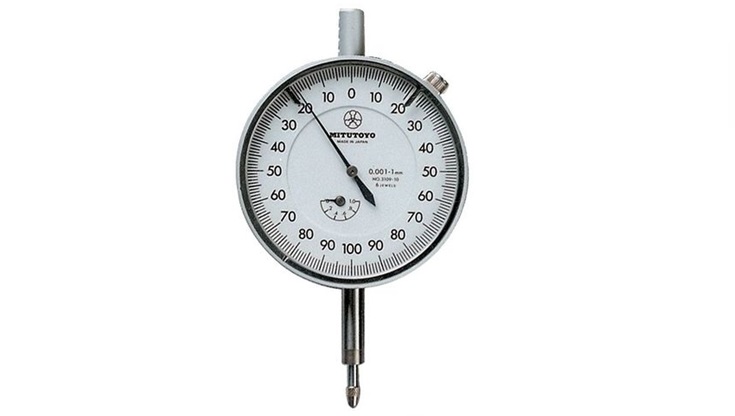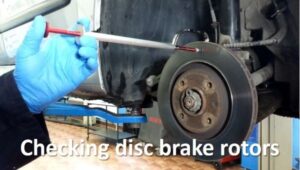Dial Indicator
The dial indicator is a measuring instrument that has a dial and needle where measurements are read. The measurement is performed via a measuring needle. The measuring needle is connected to the dial needle via a mechanism in the housing. The dial accurately displays the movement of the measuring needle.
Dial indicator
Dial indicators are most often used to measure the differences of rotating elements such as the camshaft, disc brakes, etc. Thus, they can be used to measure the trueness of a rotating disc brake rotor. A dial indicator can also measure how round something is, such as a crankshaft, which can be rotated in a set of V blocks. If the crankshaft is bent, it will show movement on the dial indicator as the crankshaft is rotated.
The dial indicator can measure with an accuracy of 0.01 mm. When measuring, the measuring needle must rest on the measuring surface along the entire circumference of rotation, there must be no space. Also, the dial indicator itself must be fixed and not move during the measurement. Most comparators have suitable stands with adjustable arms. The base is made of solid material and has a magnet for fixing.
Before measuring, fasten the stand near the measuring object. By adjusting the hinge extensions of the stand, the comparator is set so that the needle is at a right angle to the measuring surface. Tighten all accessories to ensure comparator stability. During the measurement, we observe the dial at a right angle, because a side view can lead to a reading error (parallax).
The measuring object is rotated slightly and the minimum deviation of the pointer is located. In this position, zeroing is performed by turning the dial and placing the zero opposite the measuring needle. This resets the instrument. Further slight rotation observes the deviation of the measuring needle. When the maximum displacement is located during full rotation, it is set back to that position and the value is read on the dial. The read value is the maximum difference or runout of the rotating surface about the axial rotation. Runout is the side-to-side variation of movement when a component is turned.
Check brake disc flatness







